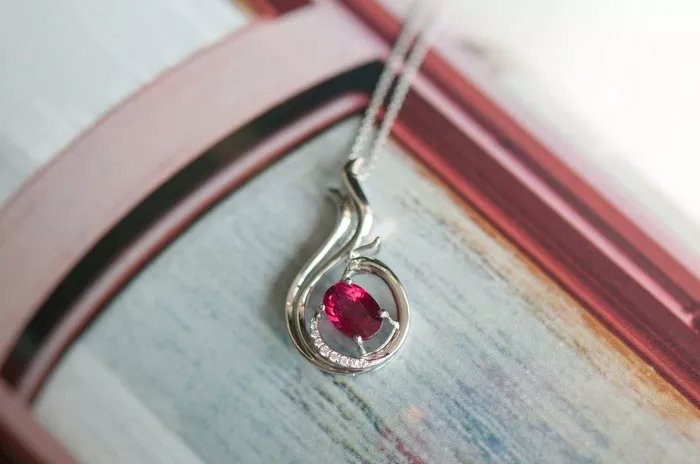In the vast world of gemstones, pink tourmaline holds a special place due to its captivating beauty, rarity, and unique properties. As a jewelry appraiser, understanding the intricacies of gemstones is crucial in assessing their authenticity, quality, and value. This article aims to provide a detailed analysis of what makes the top ten pink tourmalines stand out, drawing on professional knowledge and popular science to illuminate their unique characteristics.
The Allure of Pink Tourmaline
Pink tourmaline, often referred to as rubellite, is a variety of the tourmaline mineral family that exhibits a range of pink hues, from soft blush pinks to vibrant magentas. Tourmaline is a silicate mineral that occurs naturally in a variety of colors, but pink tourmaline is particularly rare and highly valued for its delicate and romantic color.
Unique Characteristics of Top Ten Pink Tourmalines
Color Intensity and Tone
One of the most striking features of the top ten pink tourmalines is their intense and vivid color. Pink tourmaline’s color is caused by the presence of manganese within the mineral’s crystal structure. The best pink tourmalines exhibit a strong, saturated pink hue with minimal color zoning or impurities. The most sought-after pink tourmalines are those with a pure, even color distribution that is neither too light nor too dark.
Clarity and Transparency
Clarity is another defining characteristic of high-quality pink tourmaline. Like many gemstones, pink tourmaline can contain inclusions, which are natural imperfections or foreign materials trapped within the crystal. However, the top ten pink tourmalines are noted for their exceptional clarity, with minimal to no visible inclusions. This clarity enhances the gemstone’s brilliance and allows for better light refraction, making the pink color even more striking.
Cut and Shape
The cut and shape of a gemstone can greatly affect its appearance and value. The top ten pink tourmalines are typically cut into a variety of shapes, including rounds, ovals, cushions, and emeralds, to maximize their beauty and brilliance. Skilled gem cutters carefully select the best orientation and cutting style to bring out the gemstone’s natural beauty and enhance its color. High-quality pink tourmalines are often cut to precise proportions to ensure optimal light reflection and dispersion, resulting in a sparkling and eye-catching gem.
Origin and Mining
The origin of a gemstone can also play a significant role in its uniqueness and value. Pink tourmaline is mined in various locations around the world, including Brazil, Madagascar, Africa, and the United States. However, the top ten pink tourmalines often come from specific mines known for producing high-quality gemstones. Mines in Brazil, particularly those in the state of Paraíba, are renowned for producing vivid, intense pink tourmaline with a unique color saturation that is highly sought after by collectors and jewelers.
Chemical Composition and Hardness
Pink tourmaline’s chemical composition and hardness contribute to its durability and suitability for jewelry. Tourmaline is a complex borosilicate mineral with a hardness of 7 to 7.5 on the Mohs scale, making it suitable for everyday wear and relatively resistant to scratching and wear. The chemical composition of pink tourmaline includes elements such as sodium, lithium, aluminum, silicon, boron, and oxygen, along with traces of manganese that give it its pink hue.
Treatment and Enhancement
While many gemstones undergo some form of treatment or enhancement to improve their appearance, the top ten pink tourmalines are typically untreated or minimally treated. Natural pink tourmaline is highly valued for its pure and unaltered color. Any treatments, such as heating or irradiation, can affect the gemstone’s value and should be disclosed to buyers. High-quality pink tourmaline is often sold as “untreated” or “natural,” ensuring its authenticity and rarity.
Rareness and Value
Rareness is a significant factor in determining the value of pink tourmaline. Due to its limited availability and high demand, high-quality pink tourmaline is considered a rare and precious gemstone. The top ten pink tourmalines are particularly valuable due to their exceptional color, clarity, and cut. As a result, they command higher prices and are often sought after by collectors and investors.
Metaphysical Properties
In addition to its physical beauty, pink tourmaline is also believed to possess metaphysical properties. Many people believe that pink tourmaline can promote emotional healing, reduce stress, and enhance creativity and self-expression. These beliefs contribute to the gemstone’s popularity and appeal, making it a favorite among those seeking spiritual and emotional balance.
Jewelry Applications
The versatility of pink tourmaline makes it an excellent choice for a variety of jewelry applications. It can be set in rings, earrings, necklaces, and bracelets, and its delicate pink hue pairs well with both gold and silver settings. High-quality pink tourmaline is often featured in high-end jewelry designs, where its beauty and rarity can be fully appreciated.
Historical Significance
pink tourmaline’s historical significance adds to its allure. Tourmaline has been used in jewelry and adornment for centuries, and pink tourmaline has played a role in various cultures and traditions. Its unique color and properties have made it a symbol of love, beauty, and strength, and it has been revered by many civilizations throughout history.
Conclusion
In conclusion, the top ten pink tourmalines stand out due to their exceptional color, clarity, cut, and rarity. These gemstones are highly valued for their beauty, durability, and metaphysical properties, making them a favorite among collectors, investors, and jewelry enthusiasts. Understanding the unique characteristics of pink tourmaline allows jewelry appraisers to accurately assess its authenticity, quality, and value, ensuring that consumers can make informed purchasing decisions.
Related topic:
- What Are the Different Characteristics of Obsidian and Black Tourmaline?
- Do You Understand the Price Difference Between Obsidian and Black Tourmaline?
- Obsidian or Black Tourmaline: Which Is More Suitable for Jewelry?


